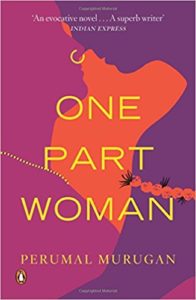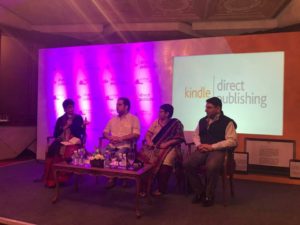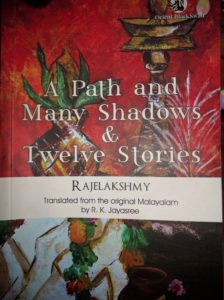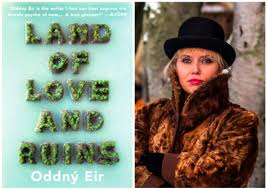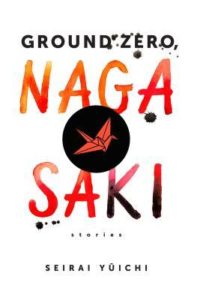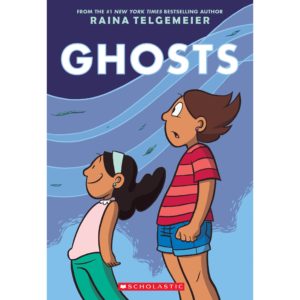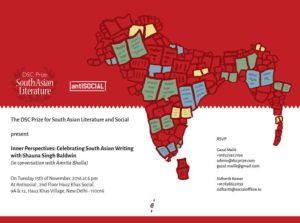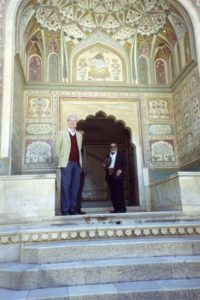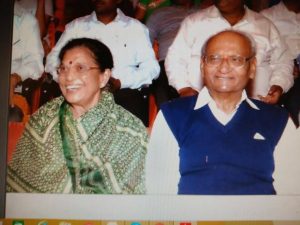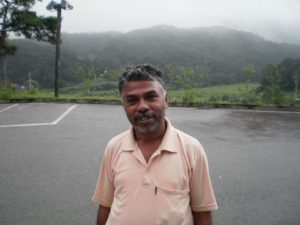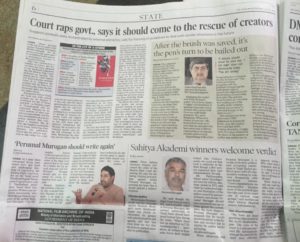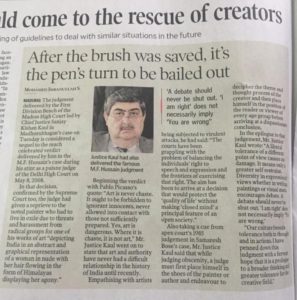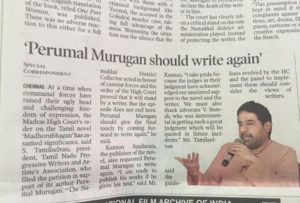French Ambassador Alexandre Ziegler explains: An interview with the ambassador about plans for translations of French literature into Indian languages and collaborations at books fairs.
I interviewed the French Ambassador to India, Alexandre Ziegler, at the Jaipur Literature Festival 2019. The interview has been published in the online news portal Scroll. The text of the interview has been c&p below while the original url is here.

Alexandre Ziegler, the French Ambassador to India, was at the Jaipur Literature Festival this year to announce the winner of the 2019 Romain Rolland Book Prize. Recognising the best translation of a French title into any Indian language, including English, the Indo-French jury takes into account the quality of the translation and the publication itself while selecting the winner.
The award comes with an invitation to the Paris Book Fair 2019 in March for the publisher of the work and an invitation for the translator to attend a one-month residency in France.
This year, the longlist included essays as well as fiction and a very strong contribution from Indian languages apart from English, with four translations into Malayalam, two into Hindi, and one each into Tamil and Bengali. The winning title was The Life of an Unknown Man by Andrei Makine, published in France by Le Seuil, in India by Kalachuvadu, translated into Tamil by SR Kichenamourty.
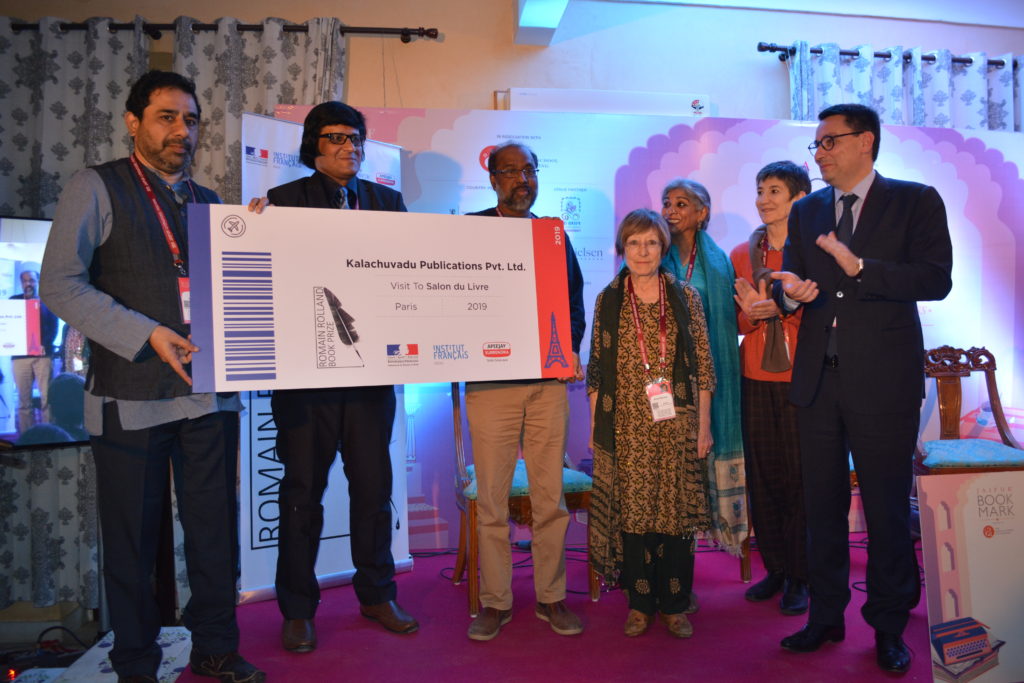
Jury members Annie Montaud, Renuka George, Michèle Albaret
The Romain Rolland Book Prize is just one of the actions of the French Institute in India to support translations of French books in India. It runs the Tagore Publication Assistance Programme and also launched a special training programme for translators this year. The first step was a one-day translation workshop focused on Indian regional languages, which took place on January 22 at the Centre for French and Francophone Studies, Jawaharlal Nehru University, and brought together more than 60 participants from various universities in Delhi. Ros Schwartz, the acclaimed translator, conducted the workshop. The long-term translation programme is part of the roadmap leading up to, on the one hand, the Paris Book Fair 2020, where India will be the focus country, and on the other, the New Delhi Book Fair 2022, where France will be the guest of honour.
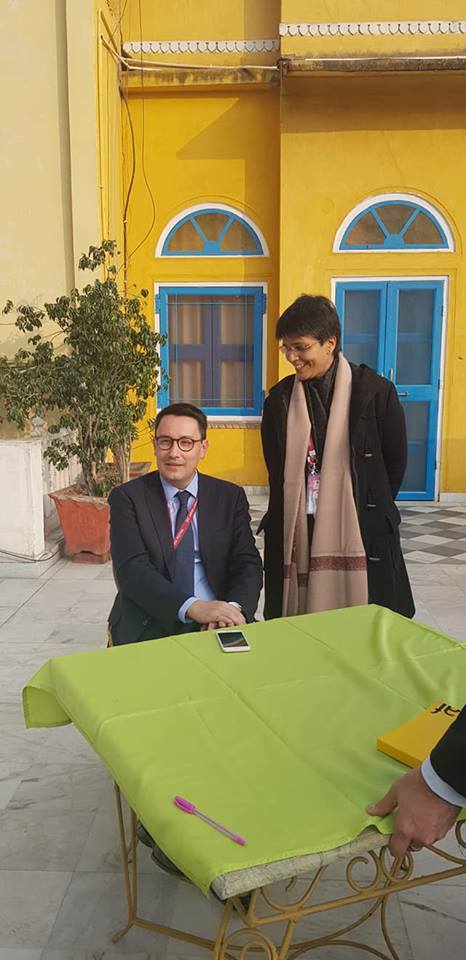
Ziegler, who has been the Ambassador of France to India since 2016, spoke at the Jaipur Literature Festival about these initiatives. Edited excerpts:
Why was the Romain Rolland Prize instituted and what is its main focus? Does France have similar prizes in other countries too?
The Romain Rolland Book Prize is a translation prize that aims to support publishers and translators involved in the translation of French titles into Indian languages. The purpose is to find the best book and to be able to negotiate for it on best possible terms while also promoting texts in translation. My feeling is that we speak about strategic and economic partnerships, of which both are growing well but we still have to invest more in culture.
In this age of machine translations, we often forget the human touch of a translator is critical. Translators are at the very core of the relationship between books and the world. What we have realised through our interventions is that it is not just texts in English and Hindi but we got very good texts from other languages like Bengali, Marathi, Tamil and Malayalam, too. It makes one realise that languages are very crucial to reaching out to other cultures, not necessarily in entire diversity of language. This is very reassuring for us.
The second Romain Rolland Book Prize is being awarded because of the quality of text. Creating the prize happened organically through the ongoing Tagore programme to recognise translations. We wanted to reinforce the initiative. As a result we are also co-organising a translations workshop with the Jawaharlal Nehru University. The first one happened in January with acclaimed translator Ros Schwartz.
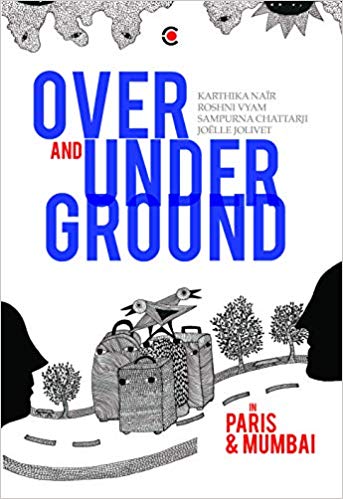
France has an active book trade, bookstores and book fairs. How receptive are the French to literature from India? Recently you released Over & Underground, a joint production between French and Indian writers and illustrators. How successful are such literary experiments? Does the cross-pollination of such cultural experiences help foster bilateral relationships, not necessarily confined to the literary domain?
Translation of the work of Indian authors in France has experienced several waves. Today there is a renewed interest among the French public for Indian authors. The dynamism of Indian publishing, its diversity and India’s international outreach have created a new curiosity for India and its authors and thinkers. The example of Over & Underground shows the combination of creativity between Indian and French authors, poets and illustrators. These co-publications need to be further encouraged and that is what we are working on.
Cross pollination of cultural experiences is exactly what we strive for to strengthen the ties between India and France. Books and other expressions of cultural diplomacy are a significant part of fostering bilateral relations.
What is the size of the French book market ? What are its characteristic features such as which genre sells the most, are print books preferred to ebooks, what is its growth rate etc? Is digital publishing making inroads with French readers?
The French publishing market is worth 4 billion euros, 300 million of which is in e-books. Overall, the French reader prefers printed books but there is a real growth in e-books. For consumer books, it represents only 3% of the market but for the B2B and books on law or medicine, this market reaches 9% with an annual growth of 10%. The e-book is also directly linked to the presence or absence of bookstores. E-books sell better where bookstores are not available.
The time of traditional reading has decreased but a recent survey conducted in November 2018 shows that 69% of the French population is connected: they read online but not necessarily literature! Each day, the French spend an average of 33 minutes on a computer and 52 minutes on a mobile phone. Reading is therefore omnipresent on other platforms but basically there is an attachment to the printed book in France: an average 5000 copies are printed but real successes vary between 200,000 and 300,000 copies. This is the case of [Michel] Houellebecq’s latest book, which will reach 400,000 copies. The trend is also to publish more titles each year. The number of prints is hence lower today than it was ten years ago.
France is known for its robust independent booksellers. Globally independent bookstores are finding it difficult to thrive but not necessarily in France. It is a remarkable success story. Do you have any interesting case study/report to share about how these independent bookstores have managed to continue?
There are about 1,000 independent bookstores in France. All those located in city centres are working well with an annual growth rate of 0.8%. This is a stable figure. Since 1981, the single price of the book has also allowed these bookstores to diversify. 37 countries, including 11 European countries, are currently applying the single price on books.
Recently the French Book Office (FBO) participated in the New Delhi World Book Fair (NDWBF). What was the response from the locals to your participation? Did the FBO gain significant learnings from its presence at the fair?
The French Institute in India invited four publishers of children’s literature and social sciences, and organised four professional panels. The exchanges between Indian and French publishers were very constructive but the NDWBF is not the ideal place for professional meetings. On the other hand, the invitation of a French author whose work has been translated in India and invited for a dialogue with an Indian author would allow exchanges with a wider audience. But our four publishers were very satisfied with their discovery of the Indian market and the prospects for collaboration in social sciences and children’s literature.
In 2003 I attended the Salon de livre Jeunesse at the invitation of the French government. It was extraordinary to see the throngs of children attending the book fair and buying books. I would be curious to know if the children’s book fair continues to be as popular. If so what are the kinds of books for children and young adults that are trending in France? Would you consider collaborating on projects for children’s and young adult literature with Indian publishers?
The Salon du livre et de la presse jeunesse in Montreuil attracts a large number of visitors each year. In 2018, for the 34th edition, there were no less than 179,000 visitors in 6 days, 4,000 more than in 2017. So I think we can say that children’s publishing is a booming sector in France. The dynamism of publishers and all those involved in books and reading contributes greatly to this success. Access to the fair was free for a good number of visitors and it is a real desire for cultural democratisation. As well as the multitude of actions that take place throughout the country and throughout the year around reading: meetings, workshops, debates, readings, competitions, prizes, etc.
Children’s literature in France is a market that knows how to renew itself, to question itself and, finally, to innovate. Thus, the early childhood segment develops real nuggets with sounds and materials to touch. The album is full of creativity with an incredible diversity of illustrators. The documentary is now close to coffee-table books by offering books that appeal to adults and children alike, whose aesthetics are so neat that it gives one pleasure to open and read them. As for fiction, from its first readings to “young adult” literature, publishers are increasingly perfecting their skills by offering books of high quality, covering all the themes that may interest young readers.
Would you consider instituting a prize similar to the Romain Rolland Book Prize for children’s literature as well?
We are in fact planning to consider children’s books as potential winners of the Romain Rolland Prize. This will be discussed in Jaipur with the jury members.
How well are translations of world literature received in France? How have you fostered and continue to manage a cross-pollination of literary traditions in France and India?
The French market is also influenced by Dan Brown and other Anglo-Saxon authors. But the phenomena of great success such as Elena Ferrante (Italian) or Arundhati Roy also shows that the French readership is open to world literature beyond Anglo-Saxons. This is why we believe that Indian authors have their rightful place in the French market.
Do you have any details that may be shared publicly of a road map planned for the 2020 Paris Book Fair where India is the guest of honour? What are the significant features of such an extraordinary event?
We are hoping to select many writers including children’s and young adult writers, across genres, as well as initiating new translations. We do not want only established writers to be invited to the festival. We would prefer to have a range of outreach programmes too. For instance, conferences, debates, collaborations with libraries, bookstores, universities etc.
What are the events planned at the 2020 Paris Book Fair? Anything exciting that the Indian publishers and readers should be aware of?
The Syndicat National de l’Edition and the National Book Trust have just signed the partnership agreement on 22 January 2019 for Livre Paris 2020. This book fair is a meeting place for the French public and Indian authors. We would like to organise panel discussions between French and Indian authors. For example we could have our two Nobel Prize winners in Economics enter into a dialogue. We also wish to encourage translation of Indian authors who have not yet been translated into French in order to introduce the French public to new young authors from all over the Indian Union. We also hope that this meeting will foster professional exchanges between Indian and French publishers. Several steps are planned. Pre-meetings in March 2019, a breakfast networking at Frankfurt between French and Indian publishers; invitation of French publishers to Jaipur 2020 and a professional training session on publishing that we would like to organise in India at the beginning of 2020. Not to mention the translation training programme that we recently launched with Jawaharlal Nehru University.
3 February 2019

